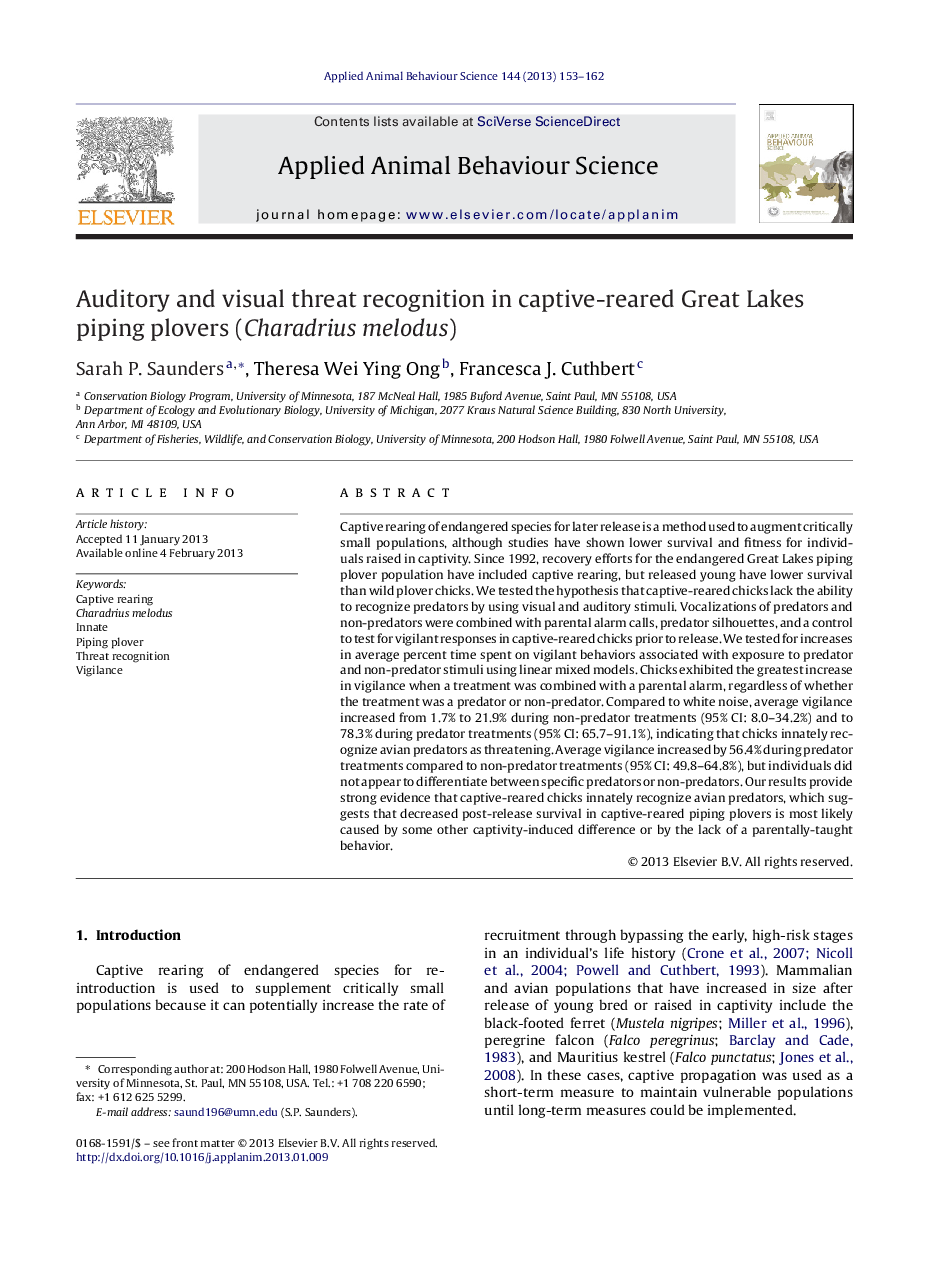| کد مقاله | کد نشریه | سال انتشار | مقاله انگلیسی | نسخه تمام متن |
|---|---|---|---|---|
| 4522684 | 1625365 | 2013 | 10 صفحه PDF | دانلود رایگان |

Captive rearing of endangered species for later release is a method used to augment critically small populations, although studies have shown lower survival and fitness for individuals raised in captivity. Since 1992, recovery efforts for the endangered Great Lakes piping plover population have included captive rearing, but released young have lower survival than wild plover chicks. We tested the hypothesis that captive-reared chicks lack the ability to recognize predators by using visual and auditory stimuli. Vocalizations of predators and non-predators were combined with parental alarm calls, predator silhouettes, and a control to test for vigilant responses in captive-reared chicks prior to release. We tested for increases in average percent time spent on vigilant behaviors associated with exposure to predator and non-predator stimuli using linear mixed models. Chicks exhibited the greatest increase in vigilance when a treatment was combined with a parental alarm, regardless of whether the treatment was a predator or non-predator. Compared to white noise, average vigilance increased from 1.7% to 21.9% during non-predator treatments (95% CI: 8.0–34.2%) and to 78.3% during predator treatments (95% CI: 65.7–91.1%), indicating that chicks innately recognize avian predators as threatening. Average vigilance increased by 56.4% during predator treatments compared to non-predator treatments (95% CI: 49.8–64.8%), but individuals did not appear to differentiate between specific predators or non-predators. Our results provide strong evidence that captive-reared chicks innately recognize avian predators, which suggests that decreased post-release survival in captive-reared piping plovers is most likely caused by some other captivity-induced difference or by the lack of a parentally-taught behavior.
Journal: Applied Animal Behaviour Science - Volume 144, Issues 3–4, March 2013, Pages 153–162